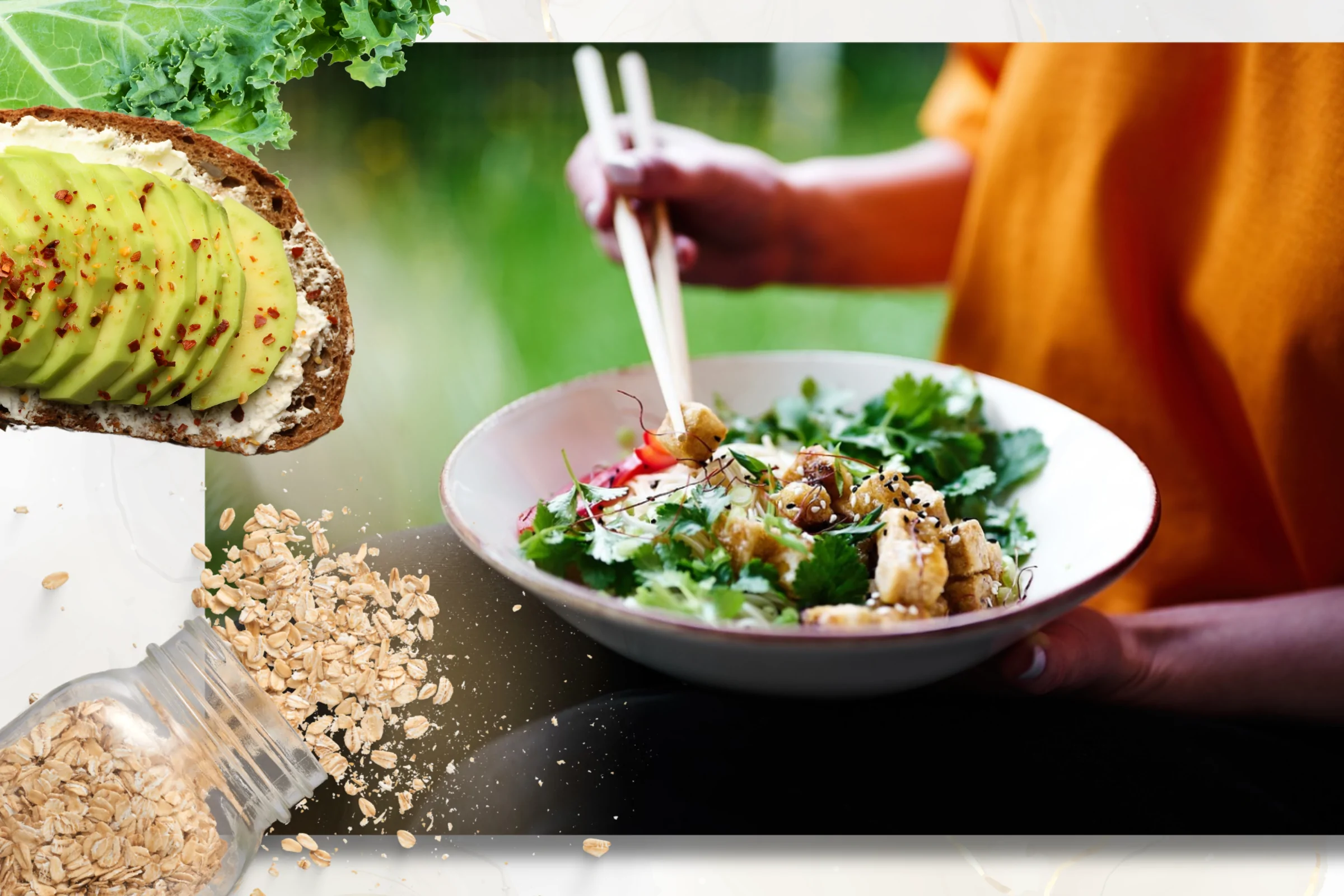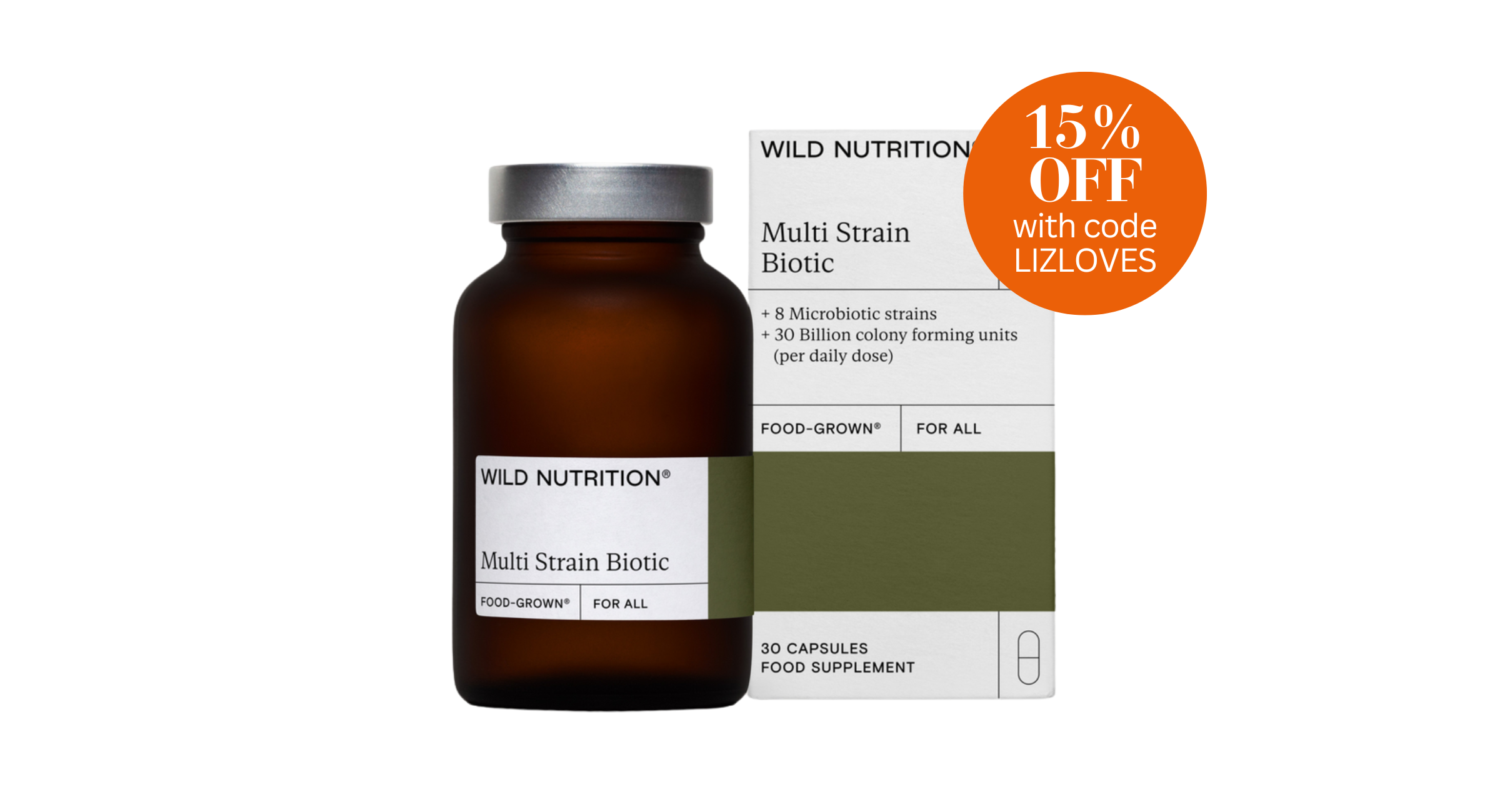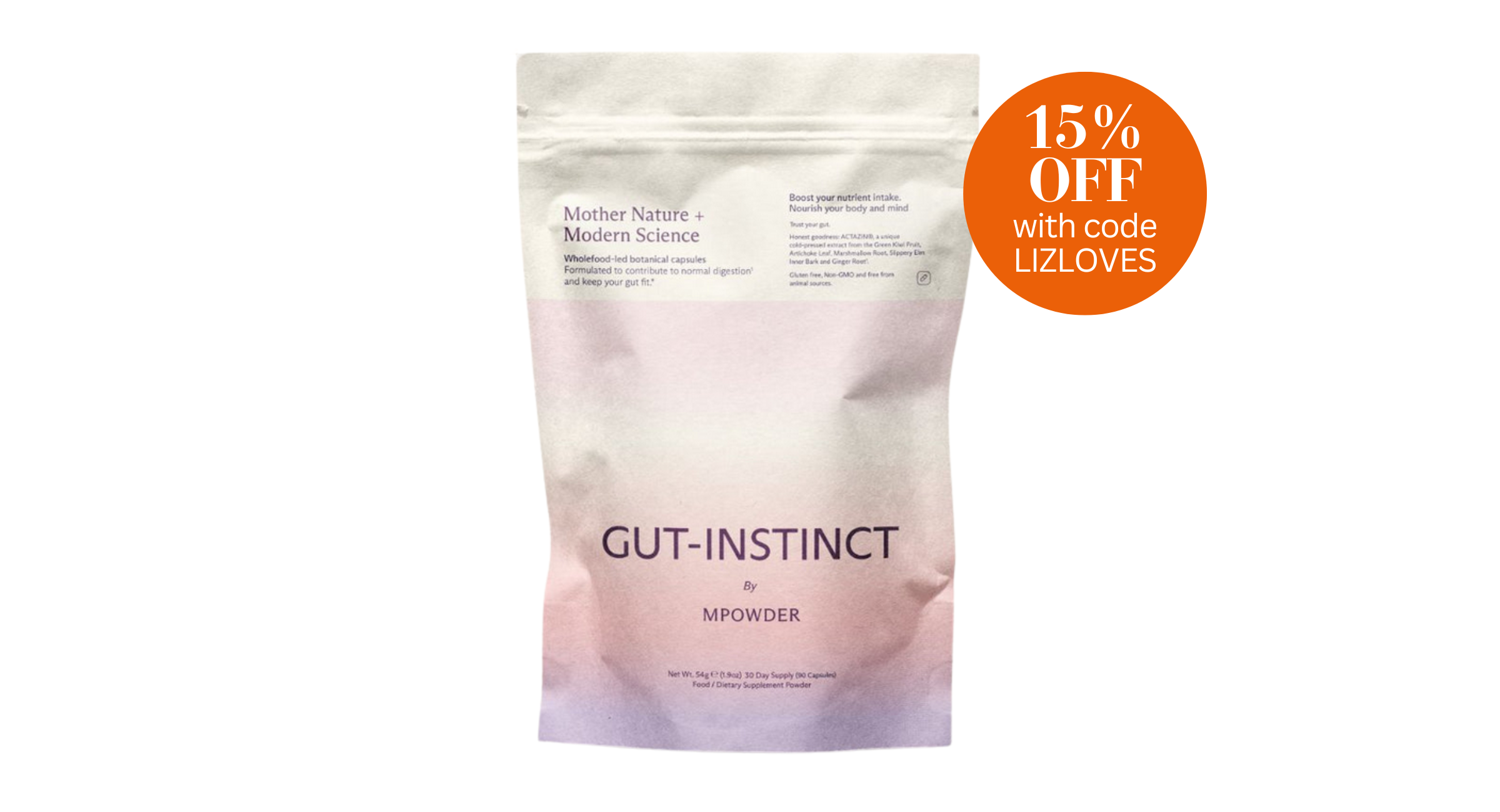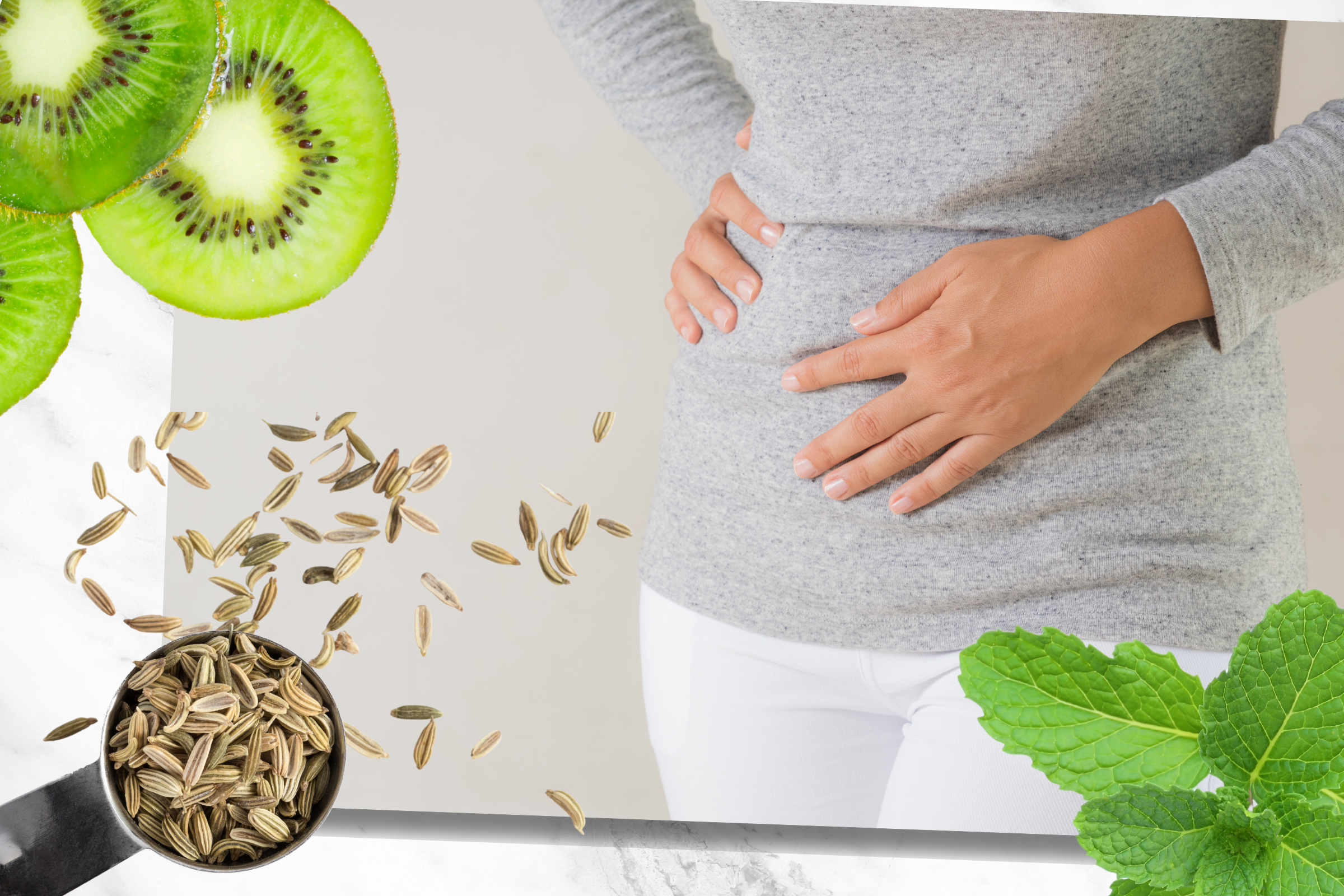6 signs you’re not eating enough fibre, and how to fix it

Eating fibre may not sound all that exciting. But, it’s essential for our health and wellbeing; fibre can keep the pounds off and even boost our mood. What’s more, adding more fibre to our diets is easier than we may think.
“We associate fibre with digestive health, but the benefits are so much more, including heart health, managing cholesterol levels and maintaining hormonal balance,” explains nutritionist, Jane McClenaghan, founder of Vital Nutrition. “This is especially important for midlife women.”
According to The Association of UK Dietitians the latest figures suggest the average Brit consumes 18g of fibre per day – a far cry from the 30g recommended for good health.
“Eating 30g of fibre doesn’t mean much to most people, but it’s easy to build it up through your diet,” continues Jane. “Essentially, we don’t eat enough plants. Yet, herbs, spices and the flavours and colours from plants make food so appetising.”
“Fibre is found exclusively in plant foods, and comes in two main forms: soluble and insoluble,” explains nutritionist, Rhiannon Lambert, founder of Rhitrition and author of The Science of Plant-Based Nutrition.
“Soluble fibre forms a gel-like substance during digestion, which helps slow the digestive process and maintain stable blood sugar levels. Foods rich in soluble fibre include oats, nuts, seeds, lentils, peas, beans, and certain fruits and vegetables.
“Insoluble fibre is only partially broken down through fermentation and is crucial for feeding our gut microbes. It’s found in foods such as wheat-bran, nuts, vegetables, and whole grains.
“There is strong evidence that the consumption of adequate fibre is associated with a lower risk of major health issues, including heart disease, stroke, type 2 diabetes, and bowel cancer.”
So how do you know if you’re eating enough fibre?
6 signs you may not be eating enough fibre
Gaining weight
A surprising consequence of not eating enough fibre is weight gain – or a struggle to lose it.
“If you feel you’re eating well but you’re not losing weight, that can be a sign you’re not getting enough fibre,” says Jane. “There’s no need to battle willpower when we’re eating enough fibre, as it helps us to feel fuller for longer and regulates our appetite.”
Not satiated after eating
Similarly, if you’re often peckish after eating your dinner, consider the amount of fibre it contained.
“If you’ve eaten a decent meal, but you’re hungry afterwards, that’s a key sign it didn’t include enough fibre,” says Jane. “Fibre is satiating, so if you’re ravenous all the time and snacking after meals, increase the fibre in your diet.”
High cholesterol
This may come as a surprise, but high cholesterol can be a clue that your diet is deficient in fibre.
“As our hormones change, we are at risk of higher cholesterol,” says Jane. “If your GP has said you have high cholesterol, look at how much fibre you’re eating. Fibre is important for maintaining hormone balance, which can impact cholesterol levels.”
“Fibre also helps to lower cholesterol levels by binding to cholesterol particles and preventing their absorption into the bloodstream,” adds Rhiannon.
Feeling tired and sluggish
“Having low energy levels and feeling constantly fatigued could indicate you’re not eating enough fibre,” says Rhiannon. “Fibre helps stabilise blood sugar by slowing the absorption of glucose into the bloodstream.
“A meal high in carbohydrates or sugar and low in fibre would see a quick release of sugar into the bloodstream, causing blood glucose levels to rapidly rise, followed by a fast decline.
“This drop in blood glucose will contribute to feelings of fatigue and low energy. Without adequate fibre, you may experience frequent energy crashes or persistent fatigue, as your body struggles to maintain stable blood sugar levels.”
Mood fluctuations
The connection between the gut and the brain and the impact of the gut microbiome on mood is a hot topic right now due to increased research.
“A lack of fibre can affect mood, and there are studies to confirm this,” says Jane. “There could be several reasons for this, including the impact of fibre on our gut microbiome, hormone metabolism and the connection between our gut and our brain. Irritability, low mood, anxiety, depression are all affected by the gut-brain axis.”
Constipation
“One of the most common signs of insufficient fibre intake is digestive discomfort, such as constipation,” says Rhiannon. “Fibre adds bulk to the stool and helps it pass through the digestive tract more easily. Without enough fibre, you might experience irregular bowel movements, straining, or hard, dry stools.”
6 easy ways to increase fibre in your diet
Include seeds and berries with breakfast
Instead of reaching for sugary cereals or processed protein bars for breakfast, top Greek yoghurt, overnight oats or porridge with seeds and berries to get a fibre-rich hit.
“A 45g serving of oats with a teaspoon of chia seeds stirred in, topped with ½ cup of raspberries provides around 13g of fibre,” says Jane. “Chia and/or flax seeds will make a big difference to your health; they are so good for balancing hormones, digestion and more.”
“Frozen berries are often cheaper than fresh,” adds Rhiannon. “They contain the same, if not more of the nutrients, and last much longer.”
Make mealtimes easier
“Avoid peeling fruit and vegetables,” says Jane. “Carrots, beetroots, parsnips – just wash and cook them, so you eat the whole vegetable, as much as possible – this will increase your fibre intake, without any effort.”
“Swap white potatoes for sweet potatoes too,” says Rhiannon. “Sweet potatoes are not only fibre-rich but also packed with vitamins and antioxidants.”
Swap your grains
“Cooked quinoa provides about 5g of fibre, while brown rice offers around 3.5g per cup,” explains Rhiannon. “So replace refined grains like white rice or white pasta with whole grains. Quinoa can be used in salads or side dishes, and brown rice can be served alongside proteins and vegetables.”
Add pulses to curries, ragus and salads
“Throwing half a can of chickpeas into a curry will add around 8g of fibre,” says Jane. “Adding a handful of cooked lentils into bolognese or a salad will do the same. It’s an easy way to bulk out the fibre in a meal and feel fuller.”
Switch up snacks
‘Three oatcakes contain 3g of fibre,” says Jane. “1/4 pot of houmous has around 2g, while a teaspoon of almond butter has 1g. So that’s 5-6g of fibre depending on your topping. Add a pear (approx 6g fibre), or an apple or banana (around 3g each) for more.
“Avocado on toast is good too; half an avocado contains 7g fibre. Even popcorn is a good source of fibre.
“If eating fibre is new for you, do it gradually, especially if you have IBS,” says Jane. “Build it up slowly and drink plenty of water.”
Try a gut friendly supplement
If you struggle to squeeze enough fibre into your diet, a supplement can help. Here are our favourite formulas for midlife women:
Wild Nutrition Multi Strain Biotic
A potent blend formulated with 30 billion friendly bacteria from eight live bacterial strains. Designed to naturally complement the flora found in the gut and mouth. Use code LIZLOVES for 15% off.

MPowder Gut Instinct
These award-winning capsules are packed with prebiotic fibre but also contain evidence-based botanicals to support a healthy metabolism and stable blood sugar levels. Take 1 capsule, 3 times a day, ideally 30 minutes before each main meal. Use code LIZLOVES for 15% off.





